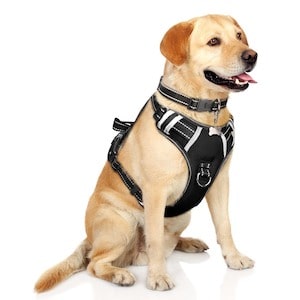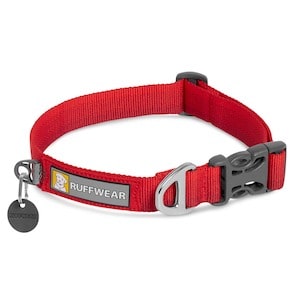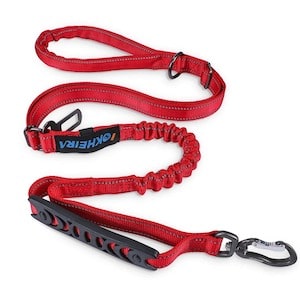Neutering is a medical procedure for ensuring that a dog doesn’t breed. Some dog owners neuter because their dog gets sexually overexcited. In male dogs, testicles are removed and in females, the womb and ovaries are.
For dog owners who regularly take their dogs out for a walk, there is a common query in their minds- How soon can I walk my dog after neutering? This article will provide you with insights on how soon can you take your canine friend out for a walk after neutering.
You Might Also Like:
How Soon Can I Walk My Dog After Neutering?
Generally, vets will suggest you rest your dog for as long as you can. But, even after neutering dogs may need some soft exercise. In fact, vets insist that you provide some exercise to avoid any tension on the wound. So, post-surgery you need to have a buffer period of 24-48 hours (for resting the dog) before you think of taking on a walk.
Once, your dog has rested properly you can begin with small walks. Taking your dog on a long walk can damage the sutures. Hence, you should carefully proceed with any activity or exercise after the neutering or spaying surgery.
Post Neutering condition of male and female dogs
Once the procedure is complete, your dog (male or female) will have a surgical wound. In general, this wound is about 3 inches, and on the underpart of the abdomen.
In male dogs, you will locate this wound between the base of their penis and the scrotum. Further, in females, you will easily find this surgical wound just behind their belly button. Also, keep in mind that this wound needs regular monitoring and if you observe any variation in the wound or find anything unusual you need to immediately visit the vet to avoid any complications.
For more clarity on this aspect let’s have a peek at the post-effects on dogs after having this surgery.
Post-Neutering Behaviour Of Dogs
While the general perception is that a dog’s health stays just fine after this surgery, it’s not always the case. A dog goes through different changes and the procedure takes a heavy toll because they are having a massive physical change. So, you will also observe a change in their behaviour.
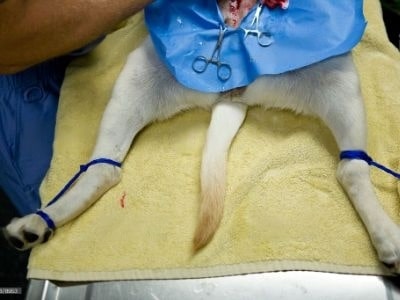
Here are some of the common behavioural changes that you’ll notice after a dog is neutered or spayed:
- Will look perplexed
- Lethargic
- Appetite will change
- Signs of anxiety and depression (self-trauma)
- Sleepiness
- Frequent urination
- Random accidents
- Clinginess
The behaviour of male dogs
A male dog will show a more behavioural shift. Following are the changes you may see in a male dog after neutering:
- The majority of the male dogs will stop the mounting and humping behaviour. However, occasionally, some dogs may continue doing so.
- They will stop looking for a mating partner and also stop urine marking within the house.
- Some dogs may exhibit aggressive behaviour.
The behaviour of female dogs
In comparison to males, female dogs will not exhibit major changes, in fact, they will maintain the same friendliness, and personality after spaying. The changes in female dogs are somewhat relieving, here are they:
- The urge to search for a mating partner reduces
- Excessive urination stops
- The pain they go through during the heat cycles reduces as they don’t there is no hormonal change activity after spaying
- They don’t get aggressive towards dogs and humans
These behavioural changes happen because the hormones produced after the procedure are different. Make sure your dog isn’t self-traumatised and help them recover well after this heavy biological shift in their body.
So, how can you assist your dog after spaying or neutering?
Recovering From Neutering / Spaying
After your furry friend is neutered or spayed, they will require your continuous support. They will feel different symptoms such as tiredness, get hungry, vomiting and so on. The recovery process will take time, and it’s best to follow the instructions that the vet provides. Here are some of the tips you can consider:
Post-Operative Recovery Tips
- Observe the dog’s behaviour for the first 24 hours after the surgery. You can use toys to keep them distracted from the pain and uneasiness caused after the procedure.
- Look for unusual signs or symptoms such as extreme lethargy, vomiting, or internal bleeding.
- See if the dog is suffering from pain, to know this, see if they are shaking, drooling or hiding.
- Use prescribed sedatives and pain medications to help with the pain.
- Inspect the incision lines on a daily basis. Look for possible discharge, redness, swelling or pain.
- To prevent your dog from licking its incision, you can use an e-collar to avoid such a situation.
- Feed your dog as per the vet’s suggestion, and don’t panic if they skip a meal or two while sleeping.
- Don’t leave your dog alone, they may end up injuring themselves while jumping or walking
Getting Started With The Routine (Walking)
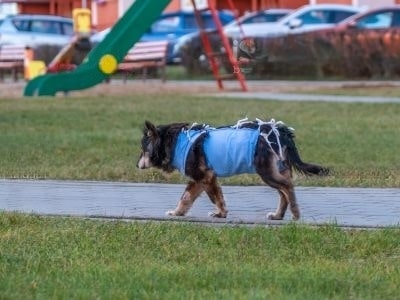
Following the post-operative recovery tips will help your dog recover nicely. Once your dog responds to the recovery, you can begin to help them to get back to its normal routine, starting with a walk.
Before taking your dog for a walk, make sure you have the best dog walking torch to provide light during evening or early morning walks.
- Walk inside the house
Before you take your dog out for a walk, start by walking inside the house. This is mainly because they need to stimulate the energy of moving again and going outside immediately can unsettle them and lower their confidence.
Further, if they get overly get excited, help them calm down. Because if they end up climbing a surface and jumping from there they can damage the incision. So, make your dog in a small place where they won’t find a table to hop on.
- Feed properly
Your dog will require strength to start physical exercises. Feed them a proper diet and make sure you also give them their medications as well.
- Clean sutures
Male dogs have sutures around their scrotum, so, it’s crucial to keep that region clean. Further, when you make your dog walk or perform any small exercise, cover the stitches. Use a wet cloth or towel to wipe crusts, dirt or bleeding. Also, make sure the dog doesn’t lick the sutures. Because, any sort of swelling, bleeding, or unpleasant discharge of pus or other fluid, will need immediate medical attention.
Getting your dog back into a walking routine after neutering should be done gradually. Before taking them out, be sure to research “how many dogs can you legally walk at once uk” to ensure you follow all regulations
Risks of making your dog walk too soon
Your dog needs time to recover after neutering or spaying. If they walk sooner they may face some severe issues. Here are some of the potential risks:
- Swelling near the sutures increases
- Sutures can easily break on any movement and can cause infection
- Extreme fatigue
- Body pain
So, make sure your dog is fit enough to walk again.
Now, you are wondering how will you know the dog is fit enough to start walking again. Well, it’s hard to tell. Every dog after neutering responds differently to the treatment.
The first 24 hours after the procedure is concluded are the worse. But, after 2 days you can see a change in the dog’s behaviour. Their body language is strong as they have regained some strength.
Still, this strength is not enough, there is no telling when they will get fully ready but, a rough estimate (considering the sutures are intact) indicates that it will take 3-4 days to make them fit for walking short distances, and at least 10 days to cover some more distance.
FAQs
How long should a male dog rest after being neutered?
The vet will suggest you provide a minimum of 2 weeks rest for your dog after neutering. In addition, when you revisit the vet, they will assess your dog’s health condition and provide you with the health status and whether or not further rest is needed.
Can I walk my dog 2 days after neutering?
Your dog does need gentle exercise post-neutering, so, yes you can take your dog for a walk. But, start with a small walk in your garden or backyard. Also, make sure that your dog doesn’t engage in high-energy activities such as jumping.
How much does it cost to neuter a dog in the UK?
Generally, the cost of neutering or spaying a dog in the UK ranges from £130 to £400. However, this price range can vary because it relies on the type of dog you have. Also, the hospital or clinic you pick for the procedure can also have a significant impact on the cost. For instance, some clinics and hospitals have 24-hour care facilities and charge more.
How do you calm an active dog after neutering?
Active dogs will show frustration after neutering, and they will find it hard to just rest. They will show their frustration and also attempt to walk on their own, but, it’s not good for them. So, to stop them from performing any form of physical exercise, you’ll need to use different strategies. You can use mental stimulation games, and toys, offer them good food treats etc.
How Soon Can I Walk My Dog After Neutering – Authors Remark
Whatever you do, don’t rush! Allow your furry friend to fully recover and then, outline a plan on how you will start with their walking routine. Vets and other medical experts suggest you wait at least two weeks before you engage your dog in physical activities such as walking but, you can start with small steps within the house after a couple of days.
Remember, to ensure a successful recovery of your canine friend, don’t miss the appointment schedule i.e. a follow-up with the vet or the hospital. To get a proper neutering surgery for the dog you can connect with a community vet clinic like Mayhew, and get details on how you can proceed with neutering and the post-recovery process.
When you start taking your dog for walks again, you may notice they poop more than usual. This is common as walking stimulates digestion. Learn more about why does my dog poop so much on walks.
